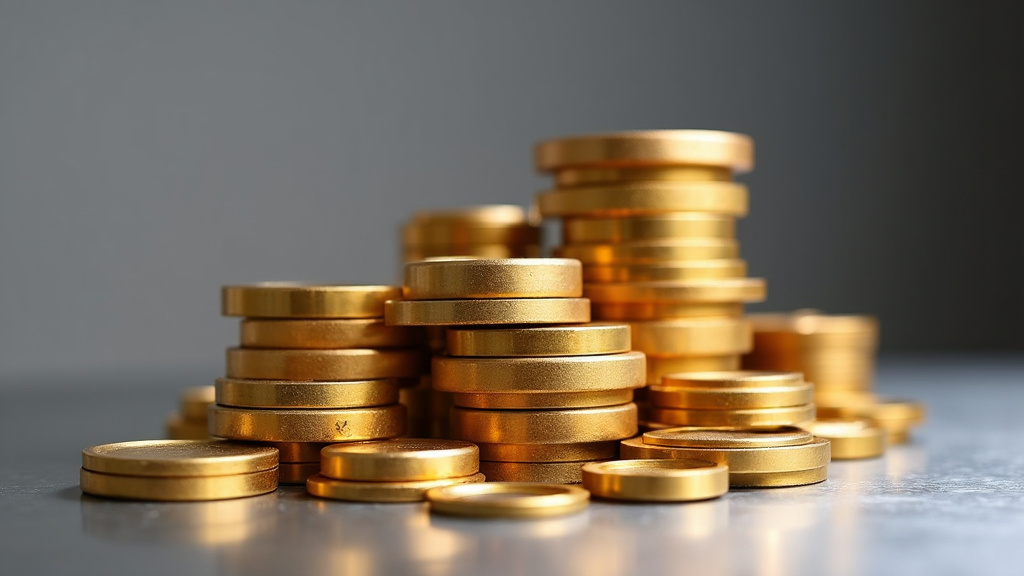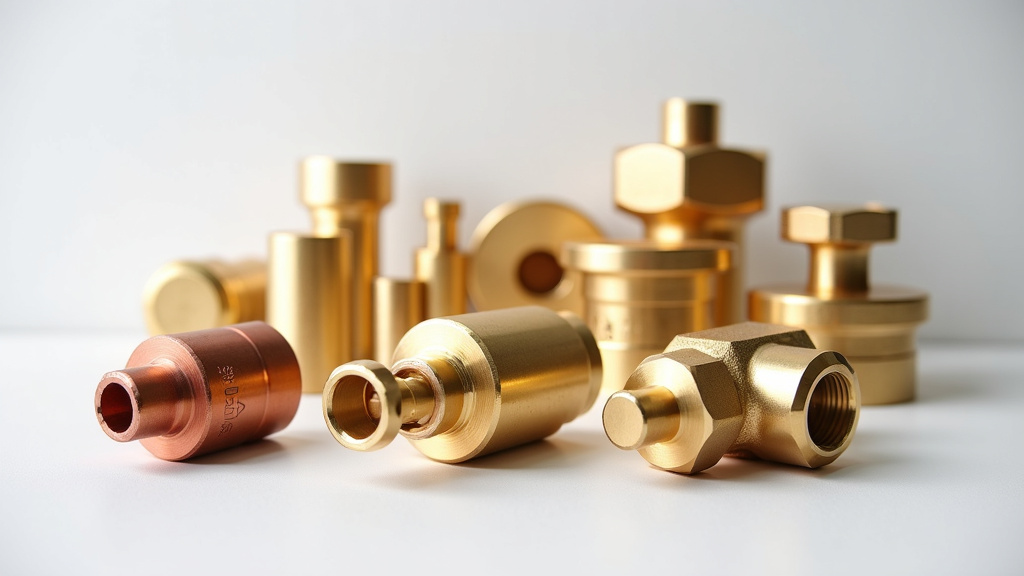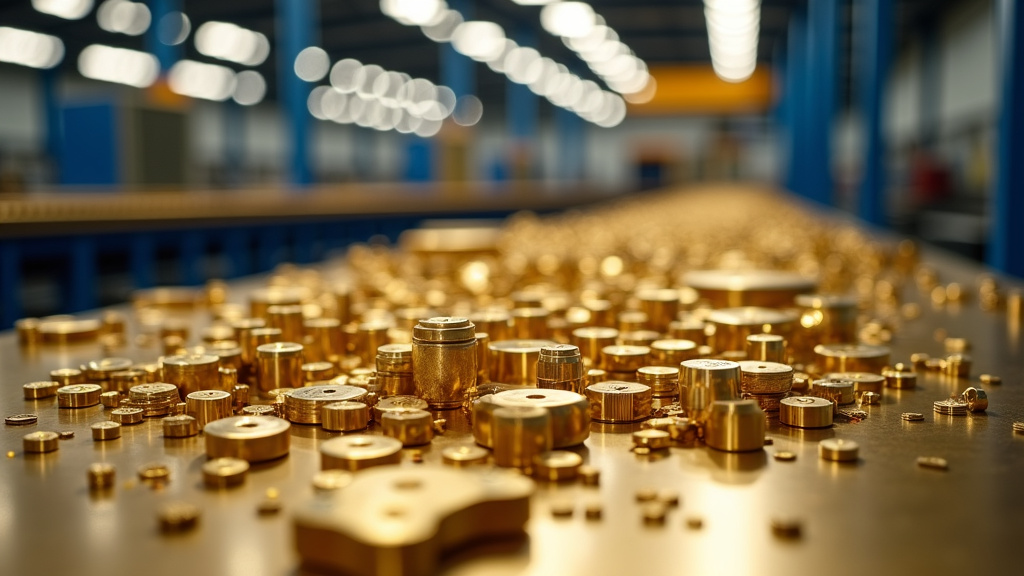5901 Botham Jean Blvd, Dallas, TX 75215
Understanding Brass Scrap Pricing: A Comprehensive Guide
April 9, 2025Could the brass doorknob you just replaced be worth more than you think? The world of brass scrap pricing is an intriguing mix of global economics, material science, and recycling innovation. As industries evolve and sustainability becomes more important, understanding the value of brass scrap is crucial for everyone from homeowners to large-scale manufacturers.
Brass, an alloy primarily of copper and zinc, has been valued for centuries for its durability, malleability, and aesthetic appeal. In today’s dynamic recycling ecosystem, its value fluctuates based on various factors. From market demand to global economic conditions, the price of brass scrap is constantly changing, presenting both challenges and opportunities for those informed.
This comprehensive guide explores the intricacies of brass scrap pricing, examining the key drivers that influence its value and why it matters in our resource-conscious world.
Factors Influencing Brass Scrap Prices

Understanding the dynamics of brass scrap pricing is crucial for both sellers and buyers in the recycling industry. Several key factors contribute to the fluctuation of brass scrap prices, making it a complex market to navigate. Here are the main elements that shape the value of brass scrap.
Composition and Market Rates of Raw Materials
Brass is primarily composed of copper and zinc, and the prices of these base metals significantly impact brass scrap values. Changes in the prices of these raw materials directly affect the value of brass scrap. When copper or zinc prices rise, brass scrap prices typically follow suit.
For instance, copper prices can range from $7.00 to $10.00 per kilogram for various qualities, directly influencing brass scrap pricing. Zinc prices, while generally lower than copper, also play a crucial role in determining the overall value of brass scrap.
Monitoring global commodity markets for copper and zinc can provide valuable insights into potential brass scrap price movements. Recyclers and buyers who stay informed about these base metal prices are better positioned to make strategic decisions in the brass scrap market.
Global Supply and Demand Dynamics
The balance between supply and demand is a fundamental factor in determining brass scrap prices. When demand outpaces supply, prices tend to rise, and conversely, when supply exceeds demand, prices often fall.
Several industries drive the demand for brass, including automotive, construction, and electronics. Economic growth in these sectors can lead to increased demand for brass, potentially raising scrap prices. Conversely, economic downturns or shifts in industry practices can reduce demand and impact prices negatively.
Global events, such as trade policies, tariffs, or political instability in key producing countries, can also affect the supply chain and influence brass scrap prices. Staying attuned to these global dynamics is essential for understanding price fluctuations in the brass scrap market.
Economic Indicators and Market Trends
Broader economic factors play a significant role in shaping brass scrap prices. Inflation rates, currency fluctuations, and overall economic health can impact the recycling industry and influence scrap metal values.
During periods of economic growth, industrial demand for brass typically increases, which can drive up scrap prices. Conversely, economic recessions may lead to reduced demand and lower prices. Monitoring economic indicators and market forecasts can provide valuable insights into potential price movements.
Additionally, technological advancements and shifts in industry practices can affect the demand for brass and its scrap. For example, the growing focus on sustainable practices and recycling initiatives may increase the value of high-quality brass scrap in the long term.
Purity and Quality of Brass Alloy
The purity and quality of brass scrap significantly influence its price. High-quality brass scrap, often referred to as “honey brass,” commands higher prices due to its cleaner composition and fewer impurities. This type of scrap is easier to process and yields a higher-quality recycled product.
On the other hand, lower-grade brass scrap, such as “brass swarf,” which may contain contaminants or be mixed with other materials, typically fetches lower prices. The cost of processing and purifying this type of scrap affects its market value.
Recyclers who can effectively sort and categorize their brass scrap based on quality and purity are better positioned to maximize their returns. Buyers, in turn, consider these factors when making purchasing decisions to ensure they are getting the best value for their investment.
- Composition of raw materials (copper and zinc prices)
- Global supply and demand dynamics
- Economic indicators and market trends
- Purity and quality of brass alloy
- Industry-specific demand (automotive, construction, electronics)
- Geopolitical events and trade policies
- Technological advancements in recycling processes
By understanding these key factors influencing brass scrap prices, both sellers and buyers can make more informed decisions in the recycling market. Staying updated on market trends, economic indicators, and industry developments is crucial for navigating the complex world of brass scrap pricing and maximizing value in this dynamic market.
| Metal | Price (USD/MT) | Change (USD) | Percentage Change (%) |
|---|---|---|---|
| Copper | 4.5347 | 0.00 | -0.02% |
| Zinc | 2864.85 | -63.65 | -2.17% |
Types of Brass Scrap and Their Value

Brass scrap plays a crucial role in metal recycling due to its widespread use and valuable composition. The recycling market categorizes brass scrap into several types, each with distinct characteristics and copper content affecting their prices.
Red Brass: The Premium Grade
Red brass, or gunmetal, is a top-tier brass scrap, typically containing up to 85% copper, which gives it a reddish hue. It’s commonly found in plumbing fixtures, water meters, and valves.
Thanks to its high copper content, red brass commands premium prices in the recycling market, with recent data showing prices from $2.40 to $2.71 per pound in the U.S.
When renovating an older home or replacing plumbing fixtures, look for red brass components; they can add significant value to your scrap collection.
Yellow Brass: The Common Contender
Yellow brass is frequently encountered, containing about 60% copper, with zinc making up the rest. This gives it a golden color.
Yellow brass is used in:
- Musical instruments like trombones and saxophones
- Decorative items such as doorknobs and drawer pulls
- Plumbing fixtures and faucets
- Electrical components
While not as valuable as red brass, yellow brass still fetches respectable prices, ranging from $2.00 to $2.32 per pound in the U.S.
Mixed Brass: The Variable Value Option
Mixed brass includes items that don’t fit neatly into red or yellow brass categories, comprising various alloys with differing copper contents.
Its value fluctuates based on composition and market conditions, generally fetching lower prices due to additional processing needs.
The Copper Content Connection
The copper content is crucial in determining brass scrap value. Higher copper percentages mean higher prices, explaining why red brass is most valuable. Scrap yards use advanced equipment to analyze brass composition for fair pricing.
| Brass Type | Copper Content (%) | Zinc Content (%) | Other Elements | Applications |
|---|---|---|---|---|
| Red Brass | 85% | 5% | 5% Tin, 5% Lead | Plumbing fixtures, water meters, valves |
| Yellow Brass | 67% | 33% | Musical instruments, decorative items, plumbing fixtures | |
| Naval Brass | 60% | 39% | 1% Tin | Marine hardware, ship propellers |
| Leaded Brass | 60% | 35.5% | 3.7% Lead | Plumbing fittings, valves, decorative hardware |
| Beta Brass | 15% | 85% | Die-cast components, locks, hinges |
Understanding these distinctions can significantly impact profits for scrappers and recyclers. Sorting brass scrap into these categories before selling can lead to better returns. Always check with local scrap yards for specific categorization and pricing policies.
Whether you’re in the demolition or construction industry or a hobbyist scrapper, knowing the types of brass scrap and their values enhances recycling efforts. This knowledge not only boosts earnings but also improves recycling efficiency, benefiting the environment.
Maximizing Value in Brass Scrap Recycling

Okon Recycling, with its century-long presence in the field, stands out as a leader in innovative, value-based recycling solutions. Our commitment to sustainability is matched by our dedication to ensuring clients receive optimal returns on their brass scrap. By choosing Okon, you’re not just recycling—you’re investing in a sustainable future while maximizing economic benefits.
The brass recycling process at Okon Recycling is designed to extract the highest value from your scrap, utilizing cutting-edge technology and industry expertise. Our approach helps conserve valuable resources and significantly reduces energy consumption and greenhouse gas emissions associated with brass production from raw materials.
By partnering with Okon Recycling for your brass scrap needs, you’re aligning environmental responsibility with financial acumen. Don’t let your valuable brass go to waste or settle for subpar recycling services. Contact Okon Recycling at 214-717-4083 today to discover how we can help you maximize the value of your brass scrap while contributing to a greener, more sustainable future.
